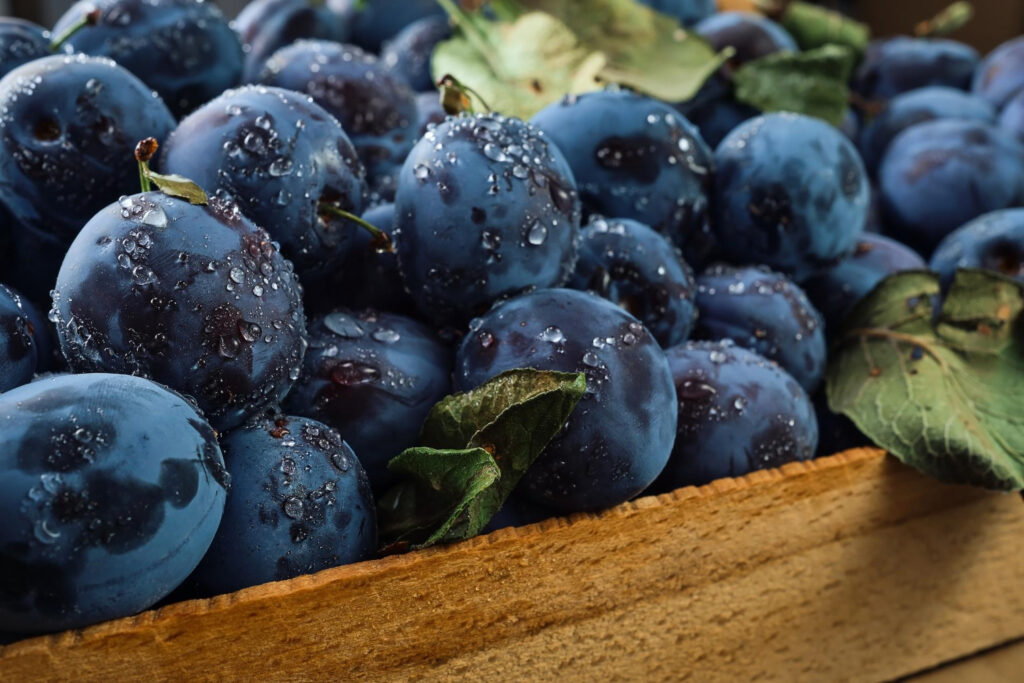
In this article
overview
Have you ever wondered why some fruits and vegetables boast a vibrant purple hue? This striking color often signals a treasure trove of nutrients called anthocyanins. While not essential for your body’s basic functions, these powerful phytonutrients play a crucial role in protecting your cells from damage, potentially warding off illnesses and diseases. Beyond their health benefits, these purple foods add a burst of color and flavor to your meals. Let’s dive into the world of purple power foods and uncover their unique benefits.
The Nutrient Powerhouse: What Makes Purple Foods Special?
Purple foods owe their vibrant color to anthocyanins, a type of flavonoid with potent antioxidant properties. These nutrients help safeguard your cells from oxidative stress, which can lead to chronic diseases. Let’s explore some purple foods and their specific health benefits.
Plums: A Classic Purple Fruit
Plums are often one of the first purple foods that come to mind. The deeper the color, the higher the anthocyanin content. Notably, the peel of a plum can contain up to 20 times more antioxidants than the flesh. These antioxidants contribute to overall health, potentially lowering the risk of chronic diseases.
Berries: Brain-Boosting Superfoods
Berries such as blueberries, blackberries, strawberries, bilberries, black currants, and mulberries are rich in anthocyanins, which range in color from red to blue. Research indicates that these berries can enhance brain function and mood, with studies showing improved cognitive performance in both children and adults who consume blueberries. Scientists believe anthocyanins aid communication between brain cells, boosting mental sharpness.
Purple Potatoes: A Nutrient-Rich Alternative
Swap out your usual white potatoes for ones with purple skin and flesh. These varieties not only contain anthocyanins but also have two to three times the total antioxidants of white potatoes. They are rich in potassium, magnesium, vitamin C, and fiber, making them a nutritious addition to your diet.
Red Cherries: Heart and Joint Protectors
Red cherries owe their dark hue to anthocyanins, which may help lower blood pressure and maintain healthy blood vessels. These fruits are also beneficial for joint health, potentially alleviating symptoms of osteoarthritis and gout. Additionally, cherries are packed with nutrients that may help prevent cancer, heart disease, and diabetes.
Grapes: More Than Just a Snack
Grapes come in various colors, from red to black, all rich in anthocyanins and the renowned antioxidant resveratrol. This compound, found primarily in grape skins, is known for its cell-protective properties, which can reduce the risk of disease. Red wine owes its health benefits to resveratrol, making moderate consumption a potentially healthy choice.
Purple Cauliflower: A Twist on a Classic Veggie
A single gene mutation in cauliflower can lead to an increase in anthocyanins, turning this usually white vegetable a vivid purple. Purple cauliflower retains all the nutritional benefits of its white counterpart, including high levels of phytonutrients, vitamin C, and minerals. To preserve its nutrients, enjoy it steamed, stir-fried, or raw.
Purple Carrots: A Colorful Health Boost
Purple carrots, found at farmers’ markets and specialty restaurants, are rich in anthocyanins and beta carotene, the latter known for its potential to reduce cancer risk and enhance immune function. Roasted, pickled, or broiled, these carrots add both color and nutrition to your meals.
Red Cabbage: Fermented and Fresh Benefits
Red cabbage is another anthocyanin-rich vegetable. Its nutrients become more bioavailable when cooked, and fermented varieties like sauerkraut and kimchi offer additional benefits through natural probiotics. These probiotics support gut health, aiding in digestion and nutrient absorption while potentially reducing anxiety.
Beets: Nature’s Sweet Treat
Beets, known for their distinct color from betalains (a different type of antioxidant), offer various health benefits, including heart and brain health. To retain their nutrients, try steaming beets instead of roasting. Their natural sweetness makes them a perfect addition to smoothies, adding both flavor and nutrition.
Purple Icing: The Processed Food Myth
While processed foods like cakes and candies may have purple coloring, this doesn’t equate to the health benefits found in fresh purple fruits and vegetables. However, natural anthocyanins are sometimes used to color other foods like blue corn chips and jellies, offering a safer alternative to artificial dyes.
Insights: More Purple Power Foods
Purple Cabbage: Also known as red cabbage, this variety is loaded with fiber, provitamin A, and vitamin C. Its anti-inflammatory properties make it a powerful addition to your diet. Purple cabbage can be used in slaws, stews, and stir-fries, offering versatility and nutrition.
Elderberries: Known for their immune-boosting properties, elderberries are often used in syrups and capsules to combat colds and flu. High in fiber and vitamin C, they can be enjoyed in jams, jellies, and juices.
Red Dragon Fruit: With its bright reddish-purple flesh, red dragon fruit is packed with fiber, vitamin C, and magnesium. It’s a nutritious addition to fruit salads and desserts, and some studies suggest it may have anti-cancer properties.
Purple Barley: This whole grain is rich in fiber and minerals, including manganese, iron, magnesium, and selenium. Purple barley also contains beta-glucan, which supports digestive health and reduces heart disease risk factors.
Purple Asparagus: Adding visual appeal and nutritional benefits to your dishes, purple asparagus is rich in anthocyanins and rutin, a polyphenol with potential heart-protective and anticancer properties.
Acai Berries: These deep purple fruits are antioxidant powerhouses, often used in acai bowls and supplements. Their high anthocyanin content makes them a popular choice in the wellness community.
Purple Mangosteen: Known for its tangy, slightly sweet flavor, mangosteen is rich in fiber and folate. Its antioxidants, xanthones, offer anti-inflammatory and anticancer benefits.
Redbor Kale: This purple-tinged variety of kale is highly nutritious, containing numerous plant compounds. It can be used in various recipes, just like other leafy greens.
Embrace the Power of Purple
Incorporating purple foods into your diet not only adds vibrant color to your meals but also provides numerous health benefits. From boosting brain function and heart health to supporting your immune system, these nutrient-rich foods are a delicious way to enhance your well-being. Next time you’re at the market, reach for those purple fruits and vegetables and enjoy the myriad of benefits they offer.
The Takeaway
Remember to enjoy a variety of these purple power foods to maximize their health benefits. By diversifying your diet with these colorful options, you’ll be taking a proactive step towards better health and vitality
A Quick Review
Purple foods, rich in anthocyanins and antioxidants, offer numerous health benefits. They protect cells from damage, boost brain function, support heart health, and may reduce the risk of chronic diseases. From berries and plums to purple potatoes and cauliflower, these vibrant foods are a nutritious and delicious addition to any diet. Learn how to incorporate them into your meals for enhanced well-being.
FAQS
What are anthocyanins?
Anthocyanins are potent antioxidants found in purple foods that protect cells from damage and reduce the risk of chronic diseases.
Which purple foods are best for brain health?
Berries like blueberries and blackberries are excellent for brain health, improving cognitive function and mood.
How do purple potatoes compare to white potatoes?
Purple potatoes have two to three times the antioxidants of white potatoes, along with high levels of potassium, magnesium, vitamin C, and fiber.
Are processed purple foods as healthy as fresh ones?
No, processed purple foods usually contain artificial dyes and lack the health benefits of fresh, naturally purple fruits and vegetables.
What are some ways to cook purple cauliflower?
Purple cauliflower can be steamed, stir-fried, or enjoyed raw to preserve its nutrients and add color to your meals.











